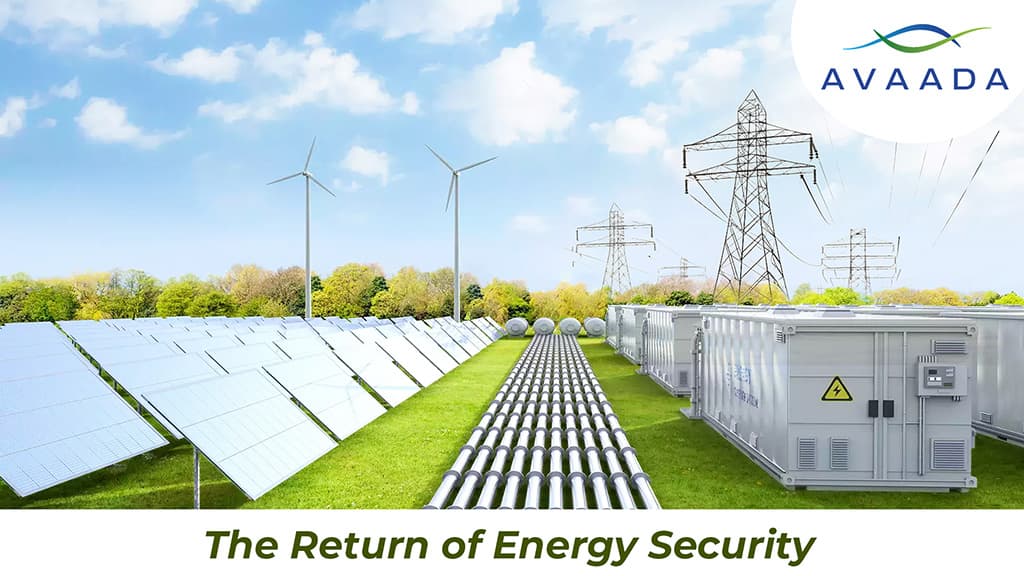“Energy security is a high priority for the energy transition”.
As the world grapples with climate change, a seemingly contradictory question emerges: can we ensure a sustainable energy future while also guaranteeing reliable and affordable energy access? The world’s demand for electricity grew by 2.2% in 2023, less than the 2.4% growth observed in 2022. While China, India and numerous countries in Southeast Asia experienced robust growth in electricity demand in 2023, advanced economies posted substantial declines due to a lacklustre macroeconomic environment and high inflation, which reduced manufacturing and industrial output. In this blog, let’s delve into the multifaceted dimensions of energy security, exploring its significance within the contemporary energy transition landscape. But current experience also demonstrates what has been learned and relearned again and again — that energy security is also a priority. And that requires continuing investment to assure reliable and affordable energy. To downplay energy security or dismiss its importance is to risk fuelling backlash, derailing climate objectives and generating crises. In this blog delves into the multifaceted dimensions of energy security, exploring its significance within the contemporary energy transition landscape.
Energy Security is The Foundation of a Stable World
The IEA defines energy security as the uninterrupted availability of energy sources at an affordable price. It refers to the fundamental imperative for countries as energy undergirds economies and is essential for the well-being of populations. Energy security ensures a steady flow of affordable and reliable energy. While renewable sources like solar and wind are on the rise, traditional fuels like oil and gas still hold a significant share of the global energy mix.
To meet the ever-growing energy needs and prevent disruptions, continued investment in infrastructure and diverse energy supplies is crucial. However, when it comes to supply sources, the primary goal of energy security is still securing the necessary quantities of gas and oil, which account for 55% of global energy production as opposed to 7% from renewable sources. Nuclear and hydropower provide the majority of the remaining commercial energy, with coal accounting for 27%. Furthermore, a significant amount of investment is required just to sustain the current levels of supply due to the natural fall in oil output, which occurs at a rate of roughly 3%–4% year.
The Impact of Recent Events
The COVID-19 pandemic temporarily muted the importance of energy security. As energy consumption fell and prices dipped, global attention shifted elsewhere. However, the reality came to the surface with a bang. For example, the 2022 Russian invasion of Ukraine served as a stark reminder of the vulnerability of global energy markets. It highlighted the critical need for robust security measures to shield ourselves from future disruptions. To lessen the effects of supply disruptions, governments, rushed to lock down alternate energy sources and increase domestic output. The switch to liquefied natural gas (LNG) in Europe and the stepped-up attempts to diversify energy sources are examples of proactive steps made to protect against vulnerabilities.
Energy Security in Global South
The world is facing a looming energy crisis, but it’s not evenly distributed. While 80% of the world’s population in developing countries struggles with limited access to affordable and reliable energy, developed nations enjoy a vastly different reality. The average person in a developed nation like Germany uses 15 times more electricity than someone in sub-Saharan Africa. The disparity is stark. Even more shocking, more than 3 billion people in the developing countries use less electricity, on an annual per capita basis, than a standard refrigerator does in the US.
This lack of energy access traps nations in poverty. With Africa’s population expected to double by 2050, a quarter of the world’s population will face energy scarcity. The potential consequences are dire: mass emigration to Europe seeking better opportunities, destabilizing entire regions.
The Role of Natural Gas
A special emphasis is being placed on natural gas to encourage economic growth and lower pollution. There are two main ways that the utilization of natural gas contributes to decarbonization. First, it contributes to grid stabilization by balancing the erratic solar and wind energy generation. By taking the place of coal, natural gas encourages decarbonization in a second way. In India, in February 2024, Prime Minister Narendra Modi announced a $67 billion investment program to expand India’s natural gas supply system. This is meant to help achieve the goal of increasing gas’ share of the national energy mix from 6% to 15% — and do so even as total energy demand doubles by 2045. Natural gas is emerging as a surprising hero in the fight for both development and climate action. Here’s why:
• Fueling Growth: Developing nations see natural gas as key to economic development. Affordable gas provides the energy needed to create jobs and lift people out of poverty.
• Climate Ally: Natural gas helps reduce emissions in two ways. Firstly, it acts as a backup for renewables like solar and wind, keeping the electricity grid stable. Secondly, it replaces coal, a much dirtier fuel source.
• Clearing the Air: Natural gas plays a vital role in improving public health. India’s massive switch to natural gas for cooking is reducing harmful indoor air pollution caused by traditional methods. This not only saves lives but also cuts carbon emissions.
Conclusion
Energy security is back in the spotlight, a reminder that it’s the foundation of a healthy energy world. But it’s a balancing act: keeping things sustainable, affordable, and reliable. Can we, do it? Absolutely!
By bringing in innovation, strengthening infrastructure, and working together across borders, we can create a new energy system that’s both sustainable and fair for everyone. Let’s manifest a future where clean energy powers our lives without being expensive, and where energy disruptions don’t plunge us into darkness. That’s the prize, and it’s within our reach. Let’s get there!








